
Almost everything you read about the South China Seas dispute is wrong
22 hours ago
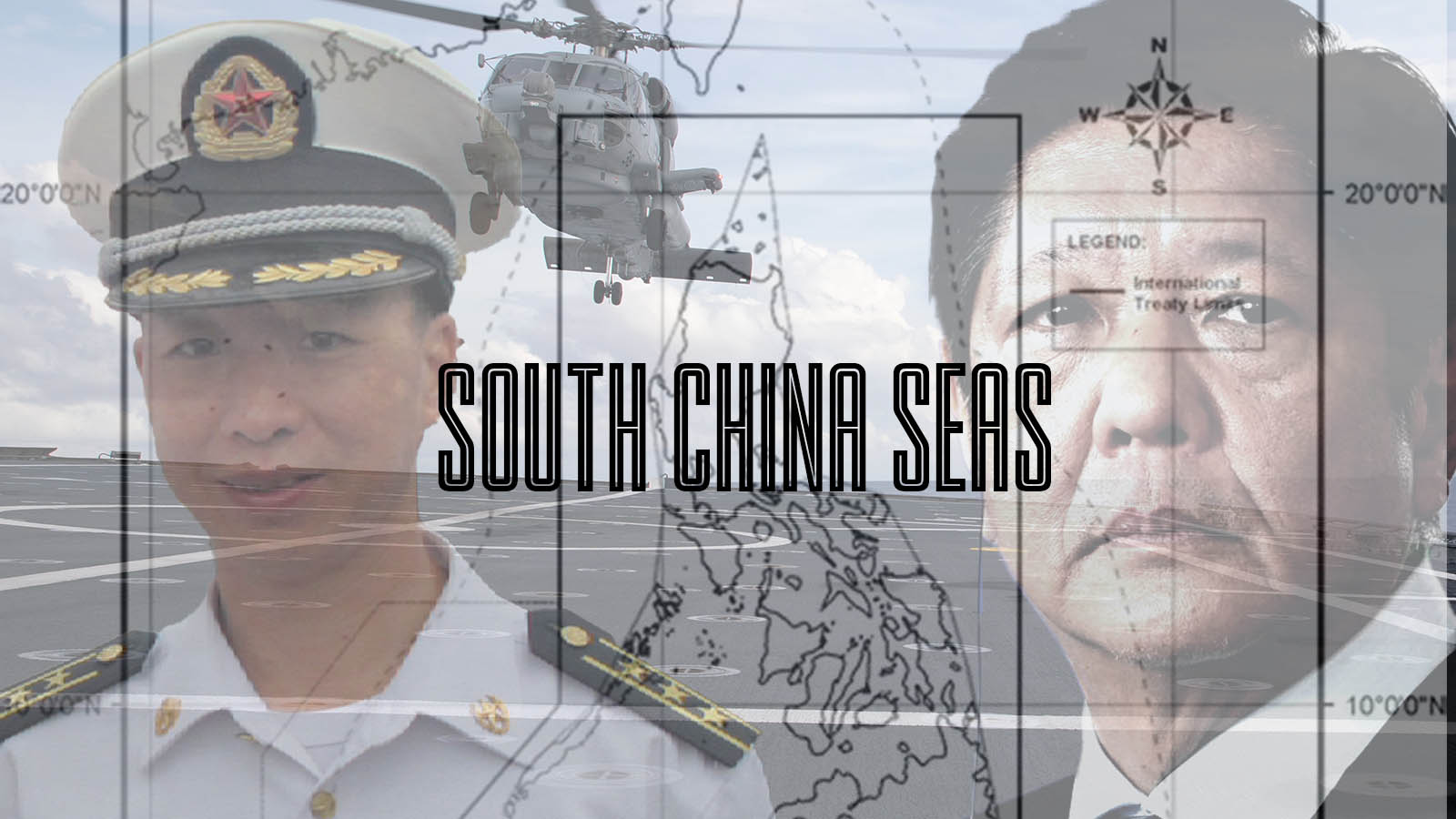
China outrageously claims the WHOLE of the South China Seas with its nine-dash line!
It does so, despite LOSING a UN court battle that ruled that the Philippines had sovereignty over the waters!
Heard those arguments before? Such myths are printed everywhere, year after year. Now read what really happened. Pierre Herbst reports.
START A CONVERSATION ABOUT the South China Seas, and then stand well back. Incoming: Angry accusations.
“China cannot be trusted!”
“China claims to own all of the South China Sea! Look at the nine-dash line!”
“A UN court confirmed that China is breaking international sovereignty rules!”
“The court said the Philippines had sovereignty, even though China tried its best to convince the court otherwise!”
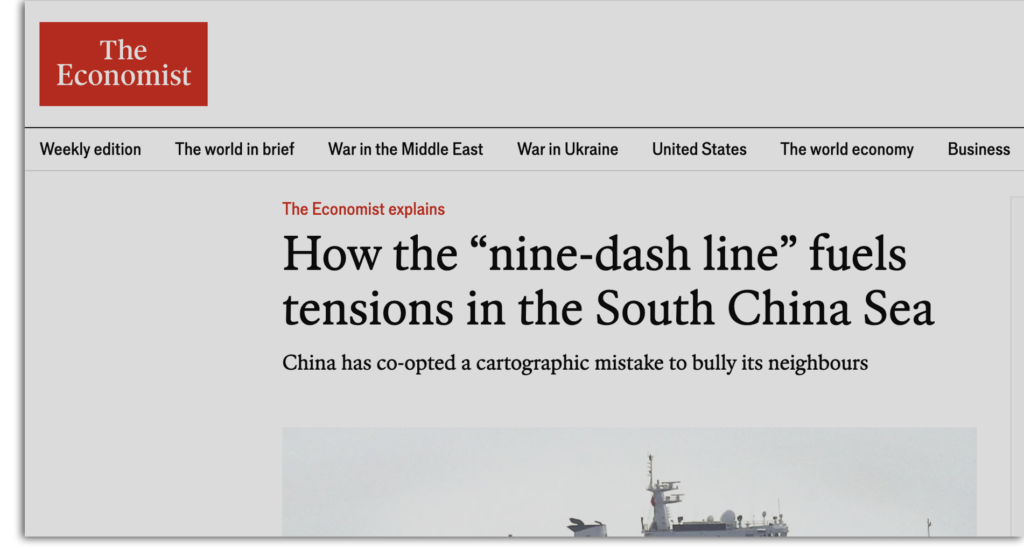
In a rational discussion (if such a thing exists), it would take me all of about 45 seconds to negate the factual inaccuracies in those short sentences.
But I don’t blame the people spouting such arguments. We are all pummelled day-in-day-out with misleading statements and factual misrepresentations on this and other topics from mass media and politicians, especially when it comes to any country on their hit list, which often has China at the top.
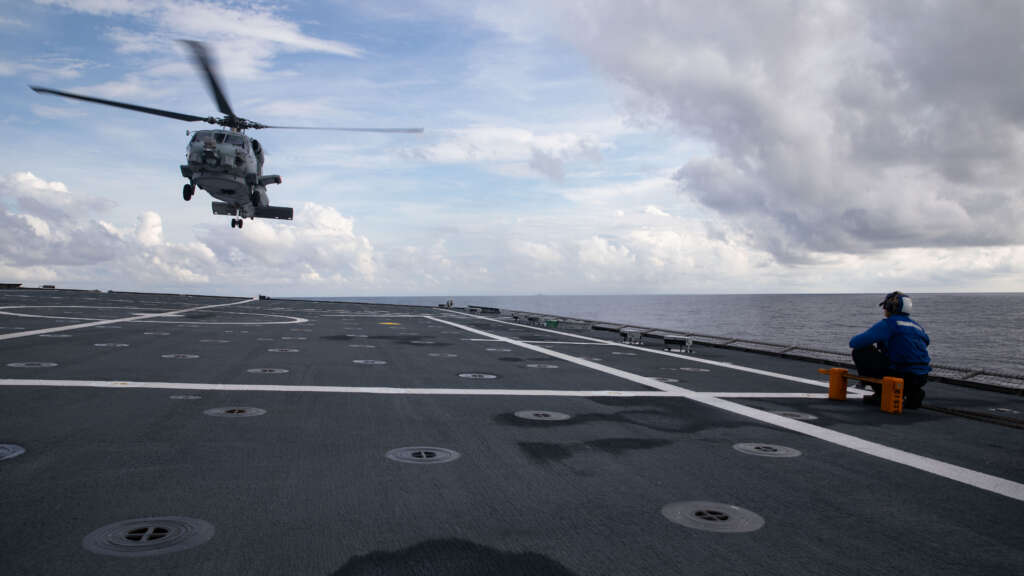
A Sea Hawk helicopter rises from a US ship in the South China Seas. The disputes in the area are used to validate US interventionist policies to consolidate Washington’s control of Asia. (US Navy image.)
THE AREA UNDER DISCUSSION
The South China Sea is bounded to the north by China, to the east by the Philippines, to the south by Malaysia and Brunei, and to the west by Vietnam. While there are more than 250 small islands, atolls, shoals, reefs, sandbars, and A LOT of fish there, there are two geological areas of interest to us: the Spratly Islands and Scarborough Shoal, both of which lie to the west of the Philippines.
THE AREA UNDER DISCUSSION
The South China Sea is bounded to the north by China, to the east by the Philippines, to the south by Malaysia and Brunei, and to the west by Vietnam. While there are more than 250 small islands, atolls, shoals, reefs, sandbars, and A LOT of fish there, there are two geological areas of interest to us: the Spratly Islands and Scarborough Shoal, both of which lie to the west of the Philippines.

The sovereignty of such islands and other features have been in dispute for a while with multiple governments laying claims, including Mainland China and Taiwan. Vietnam also claims the Spratlys, and the Philippines now claims part of the Spratlys, as well as Scarborough Shoal, while Malaysia and Brunei claim marine land features off the coast of Borneo.
Now if you look back at that last paragraph carefully, you may have noted the all-important word “now”. It appears in the phrase “the Philippines now claims part of the Spratlys”.
PHILIPPINES TREATY MAP EXCLUDES SPRATLYS
You see, it wasn’t always the case. In the late 1800s, the Filipinos were seeking independence from the Spanish. Sensing an opportunity, America joined in and helped the Filipinos beat the Spanish. But instead of letting Spain grant the Philippines independence, America said, “Nope, Philippines, you are now mine,” and imposed American sovereignty over the whole country.
So Spain surrendered, not to the people of the Philippines, but to America with the signing of the Treaty of Paris in 1898, which defines the territory.
It only takes a few minutes to get the coordinates laid out in the treaty and map it on Google Earth. And from that mapping you can clearly see that the Spratlys are plainly excluded from Philippine sovereignty.
Excluded. Not included. Separate. Outside the boundaries.

Even as recently as October 18, 1994, the National Mapping and Resource Information Authority of the Philippines confirmed that the territorial boundaries and sovereignty of the Republic of the Philippines were established in the 1898 Treaty. See the map above.
TAIWAN: ‘ISLANDS ARE CHINESE’
Now to Taiwan. Why does the Chinese province of Taiwan think the disputed islands are hers?
Glad you asked.
After the surrender of Japan in 1945, the Republic of China (RoC, not to be confused with the People’s Republic of China or PRC) resumed sovereignty over the islands in accordance with the World War 2 Cairo Declaration and the Potsdam Declaration. These called for the unconditional surrender of Japan and stated the conditions for Japan’s surrender. So all the Islands, including the Spratlys, would return to their prior owner, China, which at the time was run by the RoC.
The British High Commission of Singapore noted that the Spratly Islands were territory that was returned to China. Even the US, which was controlling the Philippines, explicitly told the Philippines that, according to the 1898 Treaty of Paris, the islands of the South China Seas were not a part of the Philippines.
The US, as an ally to the RoC, acknowledged that Japan surrendered the occupied islands and shoals back to China.
So based on this historical view of sovereignty, the RoC then published the eleven-dash line in the SCS in 1947. (By 1953, the PRC had been formed, and removed two dashes from the line in the Gulf of Tonkin, out of warmer relations with North Vietnam. This reduced the eleven-dash line to become the “nine-dash line.” However, to this day, the ROC government, centred in Taiwan, still uses the eleven-dash line.)
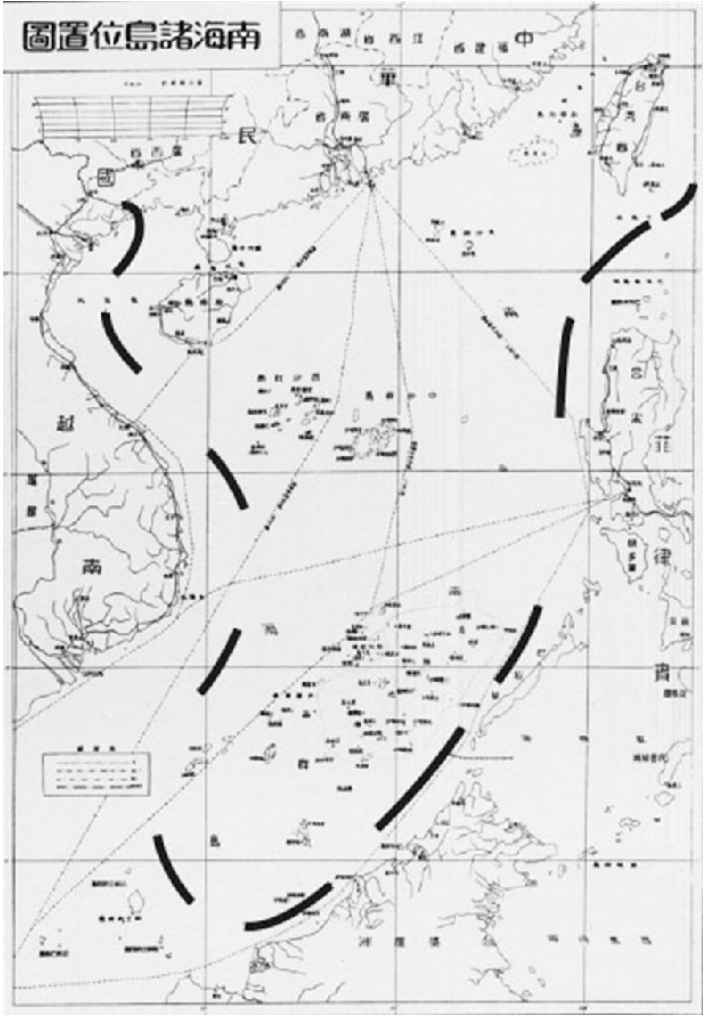
The infamous China “9 dashes” came from Taiwan’s “11 dashes”
Then came the end of the China civil war, with the RoC retreating to the island of Taiwan in 1949, at which point the PRC was created. It inherited all territory that had previously been under the RoC control, including the relevant islands in the South China Seas. The RoC disagreed, and to this day still considers itself the sole government of all of China and owns all the territory, and more, that the PRC owns.
THE U.S. AGREED THEY WERE CHINESE
Even after 1946, when the Philippines gained independence from the United States, the US continued the view that the sovereignty over these islands belonged to the RoC.
For example, the US Air Force stationed in the Philippines wanted to conduct surveys of the islands in preparation for the Vietnam War from the latter half of the 1950s. Between 1956 and 1961, it applied multiple times to the people who they knew were the correct authorities for this. Who did they consult?
NOT the Philippines, despite the fact that they were IN the Philippines at the time. They consulted the RoC authorities, who generally gave their approval.
EVEN THE U.K. SAID THE ISLANDS WERE CHINESE
Then, in October 1971, the UN General Assembly stated that the PRC was the only legitimate government of China. Subsequently, the Far Eastern Economic Review in December of that year quoted the U.K. Foreign and Commonwealth Office as stating:
“Spratly Island was a Chinese dependency, part of Kwangtung [Guangdong] Province…and was returned to China after the war. We cannot find any indication of its having been acquired by any other country and so can only conclude it is still held by communist China.”
So there we have it – the Philippines and the US and the Spanish and the Chinese and the government of Taiwan and the British all saw the Spratlys as belonging to the Chinese.

UNEXPECTED PLOT TWIST
Then came the twist!
Oil and or gas was discovered in the South China Seas in 1978.
Soon after, in 1979, when Ferdinand Marcos Sr was president, he claimed the Spratlys as belonging to the Philippines. After 1980, the Philippine government placed Scarborough Shoal within its 200-nautical-mile Exclusive Economic Zone (EEZ), although they made no sovereignty claim.
In 1994, 50 years after the RoC’s 11-dash line was created, the United Nations Convention on the Law of the Sea (UNCLOS) came into force. It laid down a regime of law and order in the world’s oceans and seas establishing rules governing all uses of the waters and their resources.
The Philippines believed UNCLOS could be used to support its attempt at claiming sovereignty over the islands that were not previously legally theirs.
However, this was a mistake. UNCLOS neither contains any provision for altering any state’s land territorial sovereignty, nor confers any country any right to claim another’s territory on the basis of its EEZ.
In other words, the UNCLOS rules assume no territorial disputes, which is obviously not the situation with the South China Seas.
But it is better to be co-operative, right?
In 1995, the PRC and the Philippines issued a “Joint Statement Concerning Consultations on the South China Sea and on Other Areas of Cooperation”. It stated that “disputes shall be settled in a peaceful and friendly manner through consultations on the basis of equality and mutual respect,” “a gradual and progressive process of cooperation shall be adopted with a view to eventually negotiating a settlement of the bilateral disputes,” and “disputes shall be settled by the countries directly concerned without prejudice to the freedom of navigation in the South China Sea”.
In other words, China and the Philippines would eventually settle this dispute over the sovereignty of the islands once they have built a certain level of trust and understanding. They were applying business tenets to state issues.
PHILIPPINES PLANTS A FLAG
Still, on April 30, 1997, the Philippine Navy and two congressmen landed on Scarborough Shoal, and bombed China’s sovereignty marker that was set up in 1990. In its place, they planted a Philippines flag.
kt remarks: Pinoys did exactly the same to an island already claimed by Malaysia, ie. Pinoy marines landed on that island, and bombed Malaysia’s sovereignty marker that was set up in xxxx. In its place, they planted a Philippines flag
In August 1999, the Philippine government listed a constitutional amendment that “the Spratly Islands are Philippine territory” in an attempt to give legal foundation to its territorial claim.
But heavier hostilities didn’t break out, and the discussions that followed were positive. In 2002, to calm things down, the disputing countries jointly signed the “Declaration on the Conduct of Parties in the South China Sea”.
And in 2005, oil companies from China, the Philippines (and Vietnam) signed the Tripartite Agreement for “Joint Marine Seismic Undertaking in the Agreement Area in the South China Sea”, with China completing the exploration stipulated in the agreement.
So things were moving forward.
RELATIONSHIP DETERIORATED
However, things quickly deteriorated again, for reasons we shan’t go into here. Actions came to a boiling point on April 10, 2012 when a Philippine naval vessel approached Chinese fishing vessels fishing in the Scarborough Shoal. Philippine soldiers boarded the fishing vessels and arrested some fishermen.
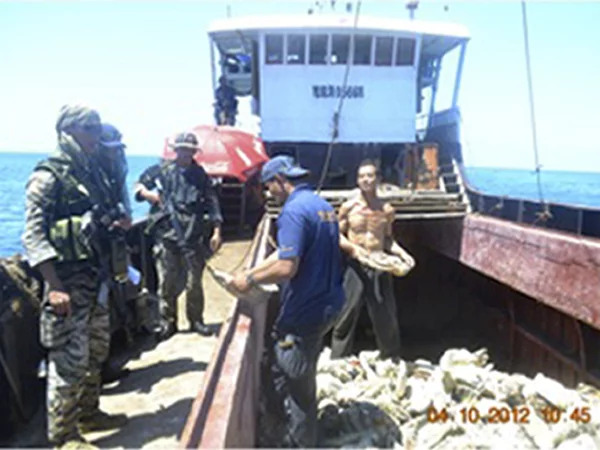
2012 Philippines Navy inspecting a Chinese fishing boat, 2012
When photos showing the fishermen standing with their tops off, on the deck of a boat, being held at gunpoint by Philippine Navy soldiers were printed in the Chinese press, it caused an outcry among the Chinese general public.
By this stage, both sides had had enough.
When photos showing the fishermen standing with their tops off, on the deck of a boat, being held at gunpoint by Philippine Navy soldiers were printed in the Chinese press, it caused an outcry among the Chinese general public.
By this stage, both sides had had enough.
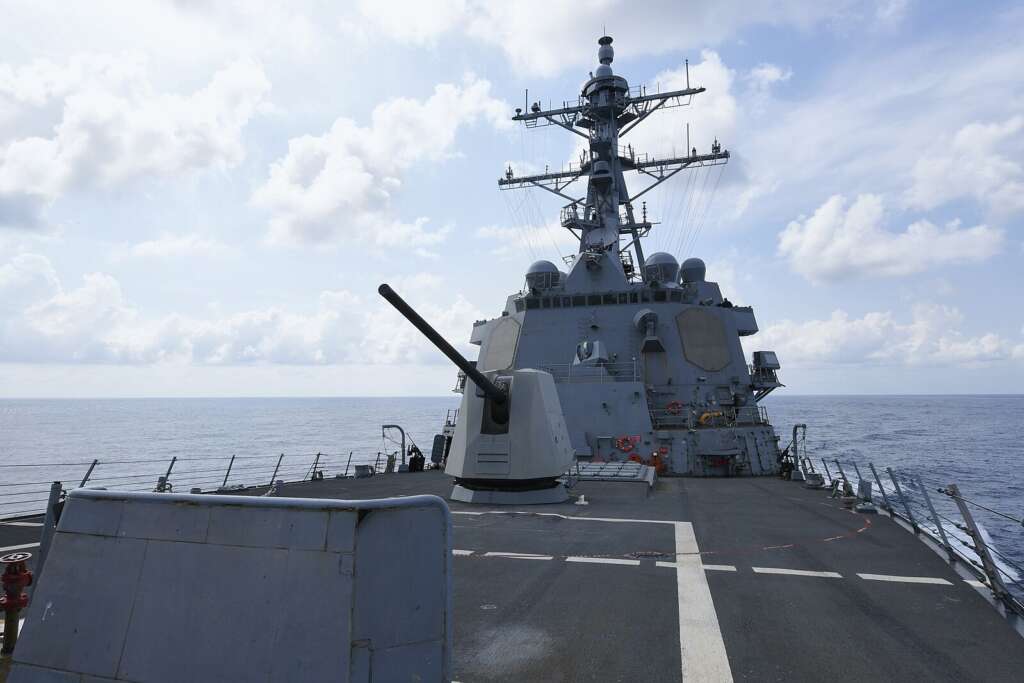
(Above is an image of the guided-missile destroyer USS Halsey in the South China Sea in May, 2024. American ships tend to be described as “making freedom of navigation” journeys, while Chinese ships tend to be described as being aggressive by simply being present. U.S. Navy photo.)
MANILA GOES TO UNCLOS
The Philippines decided in 2013 to go to the Permanent Court of Arbitration regarding certain claims under UNCLOS.
Okay. So now we have arrived at THAT infamous court case, the one that people like to quote. Let’s go back to those “misunderstandings” that we started this report with.
“China cannot be trusted!”
” China claims to own all of the South China Sea! Look at the nine-dash line! “
“A UN court confirmed that China is breaking international sovereignty rules!”
“The court said the Philippines had sovereignty, even though China tried its best to convince the court otherwise!”
How to respond?
NO, CHINA’S NOT CLAIMING THE WHOLE AREA
First, China has never said that it owns the whole of the South China Seas. On the contrary. As China’s Foreign Ministry spokesperson Wang Wenbin said in March 2024, “China has never claimed that the whole of the South China Sea belongs to it.”

China doesn’t claim the whole of the South China Seas, said Wang Wenbin.
Instead, mainland China (and Taiwan) claim all the islands that they have historical sovereignty over, because they literally do: Japan surrendered them to China in 1945, at the end of World War II.
These islands come with 12 nautical mile (nm) of territorial waters and 200 nm of EEZ waters measured from their shorelines.
It’s important to note that EEZ waters are not territorial waters but international waters. EEZ rights refer only to economic and exploitation rights. China does not claim that the islands’ EEZ waters are territorial waters. Therefore, China does not claim ownership of huge maritime areas. China is only claiming territorial rights over 12 nm of waters measured from the shorelines of the islands over which they have sovereignty. That’s the law.
That said, mainland China has never clarified its understanding of the meaning of the “nine-dash line”. Neither it nor Taiwan have published any coordinates for the nine-/eleven-dash line since its introduction in 1947/ 53.
Why not? Because it would raise tensions. “As the Nansha [or Spratly] Islands dispute is still unsettled, any attempt to clarify the dash line or maritime claims would only lead to an escalation of tensions,” the Chinese explained in a 2014 article co-authored by Fu Ying, the then-chairman of the foreign affairs committee of China’s top legislative body, and Wu Shicun, founding president of the National Institute for South China Sea Studies.
Yet it is still clear that the assumption that the dashed lines mean that Taipei and Beijing claim almost the entire South China Sea and whole area within the line as their territorial waters is just wrong.
COURT WAS NOT ‘UNITED NATIONS’
Let’s look at the next common misrepresentation.
The oft-quoted tribunal which heard the case was the Permanent Court of Arbitration (PCA).
It is NOT a United Nations organisation, and is NOT part of the UN system.
In fact, the UN made it clear on 12 July 2016, after the PCA decision, that the UN does not have a position on the legal and procedural merits of the case or on the disputed claims.
Instead, mainland China (and Taiwan) claim all the islands that they have historical sovereignty over, because they literally do: Japan surrendered them to China in 1945, at the end of World War II.
These islands come with 12 nautical mile (nm) of territorial waters and 200 nm of EEZ waters measured from their shorelines.
It’s important to note that EEZ waters are not territorial waters but international waters. EEZ rights refer only to economic and exploitation rights. China does not claim that the islands’ EEZ waters are territorial waters. Therefore, China does not claim ownership of huge maritime areas. China is only claiming territorial rights over 12 nm of waters measured from the shorelines of the islands over which they have sovereignty. That’s the law.
That said, mainland China has never clarified its understanding of the meaning of the “nine-dash line”. Neither it nor Taiwan have published any coordinates for the nine-/eleven-dash line since its introduction in 1947/ 53.
Why not? Because it would raise tensions. “As the Nansha [or Spratly] Islands dispute is still unsettled, any attempt to clarify the dash line or maritime claims would only lead to an escalation of tensions,” the Chinese explained in a 2014 article co-authored by Fu Ying, the then-chairman of the foreign affairs committee of China’s top legislative body, and Wu Shicun, founding president of the National Institute for South China Sea Studies.
Yet it is still clear that the assumption that the dashed lines mean that Taipei and Beijing claim almost the entire South China Sea and whole area within the line as their territorial waters is just wrong.
COURT WAS NOT ‘UNITED NATIONS’
Let’s look at the next common misrepresentation.
The oft-quoted tribunal which heard the case was the Permanent Court of Arbitration (PCA).
It is NOT a United Nations organisation, and is NOT part of the UN system.
In fact, the UN made it clear on 12 July 2016, after the PCA decision, that the UN does not have a position on the legal and procedural merits of the case or on the disputed claims.
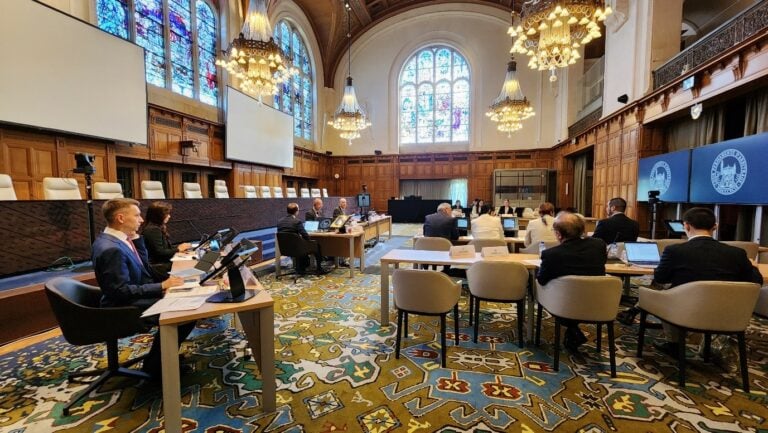
The Permanent Court of Arbitration is not an arm of the United Nations. Image: PCA
Yet how many times have you heard that the “UN court” has ruled that China was “wrong” in this case? This is simply not the truth, however many times the media repeats it.
WHAT THE TRIBUNAL ACTUALLY SAID
Now we move to misrepresentations three and four, in which people claim that the Philippines and China disputed the sovereignty of the area at a “UN Court” and the Philippines “won” the court case.
Here are the facts. The Tribunal in its record of its position was VERY clear that it could not rule on sovereignty over the islands. Even the Philippines stated at all stages of the arbitration that it did not ask the Tribunal to delimit any maritime boundaries or to rule on the territorial sovereignty aspect of its disputes with China.
I realise this will come as a surprise to many people who follow the conventional wisdom on this case. For avoidance of doubt, let us quote directly from the Tribunal award report.
Paragraph 5:
[UNCLOS] “does not address the sovereignty of States over land territory. Accordingly, this Tribunal has not been asked to…make any ruling as to which State enjoys sovereignty over any land territory in the South China Sea, in particular with respect to the disputes concerning sovereignty over the Spratly Islands or Scarborough Shoal. [Nothing] in this Award [should] be understood to imply a view with respect to questions of land sovereignty.”
Paragraph 6:
“The Tribunal has not been asked to…delimit any maritime boundary between the Parties or involving any other State bordering on the South China Sea.“
Paragraph 267:
“Because the Tribunal is not addressing questions of sovereignty, evidence concerning either Party’s historical use of the islands of the South China Sea is of no interest with respect to the formation of historic rights.”
Paragraph 814:
“The Tribunal records that this decision is entirely without prejudice to the question of sovereignty over Scarborough Shoal.”
It’s impossible to be clearer. The court case did NOT decide on who owns the South China Seas islands and UNCLOS does NOT lay down international sovereignty rules. That was why China declared that it would not participate in the arbitration — because the tribunal lacked jurisdiction.
To sum up the issue in a single line:
This. Arbitration. Was. Not. About. Sovereignty. Over. The. Islands.
WHAT IT WAS REALLY ABOUT
The arbitration was really concerned with the Philippines’ 20 specific submissions to the Tribunal on the legal basis of maritime rights and entitlements in the South China Seas, the status of certain geographic features in the area, and the lawfulness of certain actions taken by China.
And what the conclusion? Of the 20 points raised, the Tribunal agreed with the Philippines on 15 of the points, disagreed with one point, and said it did not have jurisdiction over the other four.
So, it was still a very clear win for the Philippines, right?
Sure. But wait. There are more facts to be considered.
TRIBUNAL HEARD ONLY ONE SIDE
China correctly understood that the tribunal could not rule on who had sovereignty over the islands. It realized that the convention, UNCLOS, specifically excluded that area of discussion.
Since that was the only issue at hand, China said it would not attend the tribunal. It was happy with the historical sovereignty situation and that was outside the jurisdiction of the tribunal.
So China was not represented at the Tribunal. Only the Philippines presented its case. Also, Philippines appointed one of the five arbitrators. (None were appointed by China.)
Ask yourself this: If a court case only has the prosecution side, and no defence at all, and one of the judges was put in by the prosecution, could you be certain that the end result would be based on a balanced and fair view?
I will leave that up to you to decide.
Perhaps the really surprising thing is that all 20 points were not won by the Philippines.
SUMMING UP
So in summary:China has never said its owns all of the South China Sea.The nine-dash line does not represent China’s claim on the waters.The Permanent Court of Arbitration is not a UN court.UNCLOS does not lay rules on territorial sovereignty.The court did not decide sovereignty.China was not present to defend itself, as mentioned above.
FACTS GO UNREPORTED
So those are the facts. Not only do they go unreported, but all too often the opposite is reported. There are many instances where western mainstream media has inaccurately reported on the South China Seas case, often mistakenly implying that the ruling decided issues of sovereignty. At a minimum, coverage generally implies that the ruling directly affected territorial claims, rather than telling readers that it was limited to maritime rights.
For example, on July 12, 2016:
The New York Times in its article titled “Tribunal Rejects Beijing’s Claims in South China Sea” suggested that the ruling ruled “sovereignty claims” in favour of the Philippines. That clearly misrepresents the tribunal’s actual focus, which was on maritime entitlements.
The BBC, in its article “South China Sea: Tribunal backs case against China brought by Philippines”, said that “the tribunal demolished China’s sovereignty claims”. No. Furthermore, at no stage did the BBC article mention that the tribunal itself had declared that it had no jurisdiction to decide sovereignty.
Reuters, in its article titled “Tribunal says China has no historic title over South China Sea”, stated that China “has breached the Philippines’ sovereign rights”. The article implied that the tribunal’s decision effectively awarded sovereignty to the Philippines. Reuters neglected the all-important legal context.
It’s not just journalists who get it wrong. So do politicians. In 2023, the Australian Ambassador to the Philippines, Hae Kyong Yu, stated that the PCA ruled in favour of the Philippines having “exclusive sovereign rights”.
THE FINE POINTS
To people reading these news reports and pronouncements from ambassadors, it would seem that the Philippines has legal sovereignty over the islands. When in fact, media coverage and political figures conflated the concepts of sovereignty with sovereign maritime rights, which is not the same thing.
The difference is worth taking a moment to consider.
“Sovereignty” is the right of a state to rule itself and those who live within its territory; to choose its own constitution, form of government, and recognition by other sovereign states.
“Sovereign rights”, on the other hand, as per UNCLOS, “pertains to the entitlements or privileges of a state to a defined area of a sea called the EEZ” and thus “represents the limited rights of a state over its EEZ”. This then brings in concepts such as “innocent passage”.
See how different they are? But people tend to misunderstand and simplify. So it is no surprise that with this complexity, and all the misreporting and propaganda from political figures and media, people tend to loudly get the story wrong.
THE POSSIBLE GOOD NEWS
So what can be done going forward? Well, there is a basis for peaceful reconciliation. And that is to keep the discussion in the region.
It’s notable that when fiery western politicians and western mainstream media get involved, the dispute appears to be huge and beyond resolution.
But when Asians in the region discuss it, the tone is very different. Consider the following.
China and the Philippines agreed, through bilateral instruments and the Declaration on the Conduct of Parties in the South China Sea, to settle their relevant disputes through negotiations. Former UN Secretary-General Ban Ki-moon expressed his hope “that the continued consultations on a Code of Conduct between ASEAN and China under the framework of the Declaration of the Conduct of Parties in the South China Sea will lead to increased mutual understanding among all the parties.”
Yet how many times have you heard that the “UN court” has ruled that China was “wrong” in this case? This is simply not the truth, however many times the media repeats it.
WHAT THE TRIBUNAL ACTUALLY SAID
Now we move to misrepresentations three and four, in which people claim that the Philippines and China disputed the sovereignty of the area at a “UN Court” and the Philippines “won” the court case.
Here are the facts. The Tribunal in its record of its position was VERY clear that it could not rule on sovereignty over the islands. Even the Philippines stated at all stages of the arbitration that it did not ask the Tribunal to delimit any maritime boundaries or to rule on the territorial sovereignty aspect of its disputes with China.
I realise this will come as a surprise to many people who follow the conventional wisdom on this case. For avoidance of doubt, let us quote directly from the Tribunal award report.
Paragraph 5:
[UNCLOS] “does not address the sovereignty of States over land territory. Accordingly, this Tribunal has not been asked to…make any ruling as to which State enjoys sovereignty over any land territory in the South China Sea, in particular with respect to the disputes concerning sovereignty over the Spratly Islands or Scarborough Shoal. [Nothing] in this Award [should] be understood to imply a view with respect to questions of land sovereignty.”
Paragraph 6:
“The Tribunal has not been asked to…delimit any maritime boundary between the Parties or involving any other State bordering on the South China Sea.“
Paragraph 267:
“Because the Tribunal is not addressing questions of sovereignty, evidence concerning either Party’s historical use of the islands of the South China Sea is of no interest with respect to the formation of historic rights.”
Paragraph 814:
“The Tribunal records that this decision is entirely without prejudice to the question of sovereignty over Scarborough Shoal.”
It’s impossible to be clearer. The court case did NOT decide on who owns the South China Seas islands and UNCLOS does NOT lay down international sovereignty rules. That was why China declared that it would not participate in the arbitration — because the tribunal lacked jurisdiction.
To sum up the issue in a single line:
This. Arbitration. Was. Not. About. Sovereignty. Over. The. Islands.
WHAT IT WAS REALLY ABOUT
The arbitration was really concerned with the Philippines’ 20 specific submissions to the Tribunal on the legal basis of maritime rights and entitlements in the South China Seas, the status of certain geographic features in the area, and the lawfulness of certain actions taken by China.
And what the conclusion? Of the 20 points raised, the Tribunal agreed with the Philippines on 15 of the points, disagreed with one point, and said it did not have jurisdiction over the other four.
So, it was still a very clear win for the Philippines, right?
Sure. But wait. There are more facts to be considered.
TRIBUNAL HEARD ONLY ONE SIDE
China correctly understood that the tribunal could not rule on who had sovereignty over the islands. It realized that the convention, UNCLOS, specifically excluded that area of discussion.
Since that was the only issue at hand, China said it would not attend the tribunal. It was happy with the historical sovereignty situation and that was outside the jurisdiction of the tribunal.
So China was not represented at the Tribunal. Only the Philippines presented its case. Also, Philippines appointed one of the five arbitrators. (None were appointed by China.)
Ask yourself this: If a court case only has the prosecution side, and no defence at all, and one of the judges was put in by the prosecution, could you be certain that the end result would be based on a balanced and fair view?
I will leave that up to you to decide.
Perhaps the really surprising thing is that all 20 points were not won by the Philippines.
SUMMING UP
So in summary:China has never said its owns all of the South China Sea.The nine-dash line does not represent China’s claim on the waters.The Permanent Court of Arbitration is not a UN court.UNCLOS does not lay rules on territorial sovereignty.The court did not decide sovereignty.China was not present to defend itself, as mentioned above.
FACTS GO UNREPORTED
So those are the facts. Not only do they go unreported, but all too often the opposite is reported. There are many instances where western mainstream media has inaccurately reported on the South China Seas case, often mistakenly implying that the ruling decided issues of sovereignty. At a minimum, coverage generally implies that the ruling directly affected territorial claims, rather than telling readers that it was limited to maritime rights.
For example, on July 12, 2016:
The New York Times in its article titled “Tribunal Rejects Beijing’s Claims in South China Sea” suggested that the ruling ruled “sovereignty claims” in favour of the Philippines. That clearly misrepresents the tribunal’s actual focus, which was on maritime entitlements.
The BBC, in its article “South China Sea: Tribunal backs case against China brought by Philippines”, said that “the tribunal demolished China’s sovereignty claims”. No. Furthermore, at no stage did the BBC article mention that the tribunal itself had declared that it had no jurisdiction to decide sovereignty.
Reuters, in its article titled “Tribunal says China has no historic title over South China Sea”, stated that China “has breached the Philippines’ sovereign rights”. The article implied that the tribunal’s decision effectively awarded sovereignty to the Philippines. Reuters neglected the all-important legal context.
It’s not just journalists who get it wrong. So do politicians. In 2023, the Australian Ambassador to the Philippines, Hae Kyong Yu, stated that the PCA ruled in favour of the Philippines having “exclusive sovereign rights”.
THE FINE POINTS
To people reading these news reports and pronouncements from ambassadors, it would seem that the Philippines has legal sovereignty over the islands. When in fact, media coverage and political figures conflated the concepts of sovereignty with sovereign maritime rights, which is not the same thing.
The difference is worth taking a moment to consider.
“Sovereignty” is the right of a state to rule itself and those who live within its territory; to choose its own constitution, form of government, and recognition by other sovereign states.
“Sovereign rights”, on the other hand, as per UNCLOS, “pertains to the entitlements or privileges of a state to a defined area of a sea called the EEZ” and thus “represents the limited rights of a state over its EEZ”. This then brings in concepts such as “innocent passage”.
See how different they are? But people tend to misunderstand and simplify. So it is no surprise that with this complexity, and all the misreporting and propaganda from political figures and media, people tend to loudly get the story wrong.
THE POSSIBLE GOOD NEWS
So what can be done going forward? Well, there is a basis for peaceful reconciliation. And that is to keep the discussion in the region.
It’s notable that when fiery western politicians and western mainstream media get involved, the dispute appears to be huge and beyond resolution.
But when Asians in the region discuss it, the tone is very different. Consider the following.
China and the Philippines agreed, through bilateral instruments and the Declaration on the Conduct of Parties in the South China Sea, to settle their relevant disputes through negotiations. Former UN Secretary-General Ban Ki-moon expressed his hope “that the continued consultations on a Code of Conduct between ASEAN and China under the framework of the Declaration of the Conduct of Parties in the South China Sea will lead to increased mutual understanding among all the parties.”

Malaysia’s Prime Minister Anwar Ibrahim, seen here with Russia’s Vladimir Putin, was long assumed to be US-allied, but has turned out to be independent-minded. (2024 Image: Russian Federation.)
Perhaps the approach that Malaysia is adopting could be a model for resolution. Malaysian Prime Minister Anwar Ibrahim did not dispute that the overlapping claims were an issue between “the two partners” [China and Malaysia], but stressed that the West had an “obsession, the tendency to exaggerate the problem”.
“Do we have a problem [with China]? Yes. Have we encountered any serious clashes or problems? No,” he said.
Anwar called for settling South China Seas disputes through bilateral engagements and discussions within ASEAN, rather than third-party intervention, especially to quell the latest tensions between Beijing and the Philippines. “It is important to impress on the Philippines, on the Chinese, that we are here. We must be prepared and able to manage our own affairs”.
THE REAL DISPUTE
Forget the articles which wrongly claim that the Philippines won sovereignty in a UN court. The real issues are these.
China is of the view that the key dispute between the countries is over the issue of ownership of the South China Seas islands. Only after ownership of all the islands are determined can we then proceed to determine which country owns which EEZ zone in the South China Seas and that in turn would determine which country enjoys the economic/exploitation rights in the respective EEZ zone.
The Philippines’ position is characterized by a firm assertion of its sovereignty, rightly or wrongly, bolstered by the 2016 arbitration ruling. It is pushing diplomatic engagement and military cooperation, particularly with allies like the United States, against China. The Philippines considers that it needs to uphold its maritime rights with a view to also safeguarding its territorial integrity.
Once the real issues are identified, there is a prospect of solving them.
The ratcheting up of tensions by outside agitators is not helping. But it is key that leaders rise above the increasingly nationalistic undercurrents to reverse this tide of adversarial confrontation in favour of respectful negotiation.
AUTHOR’S NOTE: This article is not meant to be a complete compendium of events related to the South China Seas disputes. Instead its objective is to give readers a fuller picture by providing certain matters which are not prominent in the western media. Certainly, some westerners, and in particular some Filipinos, will say I have left out all the “well documented aggressive” actions taken by the Chinese forces over the years.
Yup. I agree. But a Chinese naval vessel just has to look menacingly at any Philippine vessel for the mass media to go berserk and print it on the front page of the morning papers and as the lead story on their 6pm, 6:30pm, and 7pm prime time news, without providing any context.
Hopefully after reading this article you will realise that the mass media portrayal misrepresents the situation. So don’t just rely on the mass media but instead challenge what you hear; go to the original source, such as court rulings and historical sovereignty agreements, and seek the whole truth.
Once you do that, then you may see those “aggressive” actions in a more balanced light. Only by understanding both sides’ positions and building a certain level of mutual trust can we hope to find a lasting and equitable resolution.
Pierre Herbst
Hong Kong, 2025
Perhaps the approach that Malaysia is adopting could be a model for resolution. Malaysian Prime Minister Anwar Ibrahim did not dispute that the overlapping claims were an issue between “the two partners” [China and Malaysia], but stressed that the West had an “obsession, the tendency to exaggerate the problem”.
“Do we have a problem [with China]? Yes. Have we encountered any serious clashes or problems? No,” he said.
Anwar called for settling South China Seas disputes through bilateral engagements and discussions within ASEAN, rather than third-party intervention, especially to quell the latest tensions between Beijing and the Philippines. “It is important to impress on the Philippines, on the Chinese, that we are here. We must be prepared and able to manage our own affairs”.
THE REAL DISPUTE
Forget the articles which wrongly claim that the Philippines won sovereignty in a UN court. The real issues are these.
China is of the view that the key dispute between the countries is over the issue of ownership of the South China Seas islands. Only after ownership of all the islands are determined can we then proceed to determine which country owns which EEZ zone in the South China Seas and that in turn would determine which country enjoys the economic/exploitation rights in the respective EEZ zone.
The Philippines’ position is characterized by a firm assertion of its sovereignty, rightly or wrongly, bolstered by the 2016 arbitration ruling. It is pushing diplomatic engagement and military cooperation, particularly with allies like the United States, against China. The Philippines considers that it needs to uphold its maritime rights with a view to also safeguarding its territorial integrity.
Once the real issues are identified, there is a prospect of solving them.
The ratcheting up of tensions by outside agitators is not helping. But it is key that leaders rise above the increasingly nationalistic undercurrents to reverse this tide of adversarial confrontation in favour of respectful negotiation.
AUTHOR’S NOTE: This article is not meant to be a complete compendium of events related to the South China Seas disputes. Instead its objective is to give readers a fuller picture by providing certain matters which are not prominent in the western media. Certainly, some westerners, and in particular some Filipinos, will say I have left out all the “well documented aggressive” actions taken by the Chinese forces over the years.
Yup. I agree. But a Chinese naval vessel just has to look menacingly at any Philippine vessel for the mass media to go berserk and print it on the front page of the morning papers and as the lead story on their 6pm, 6:30pm, and 7pm prime time news, without providing any context.
Hopefully after reading this article you will realise that the mass media portrayal misrepresents the situation. So don’t just rely on the mass media but instead challenge what you hear; go to the original source, such as court rulings and historical sovereignty agreements, and seek the whole truth.
Once you do that, then you may see those “aggressive” actions in a more balanced light. Only by understanding both sides’ positions and building a certain level of mutual trust can we hope to find a lasting and equitable resolution.
Pierre Herbst
Hong Kong, 2025
NO - the author is wrong, and outright mistaken (I won't venture to accuse him lying -yet)
ReplyDeleteSo so easy for a mfering u to just chant NO out of thin air.
DeleteOoop… ain't that yr usual self expression on all things!
There is a glaring FACT that the writer has missed out.
ReplyDeleteThe historical link of many of those SCS landmasses associated with the fishermen from the coastal areas of Fujian, Guangdong & Hainan since the written records from the Qin dynasty, more than two thousands yr ago.
No other claimant nations within the disputed SCS maritime territories can provide similar records (wakakaka… maybe those 台毒蛙) to substantiate their claims.
This fact is critically important in establishing the real sovereign ownership of those landmasses belong to China.